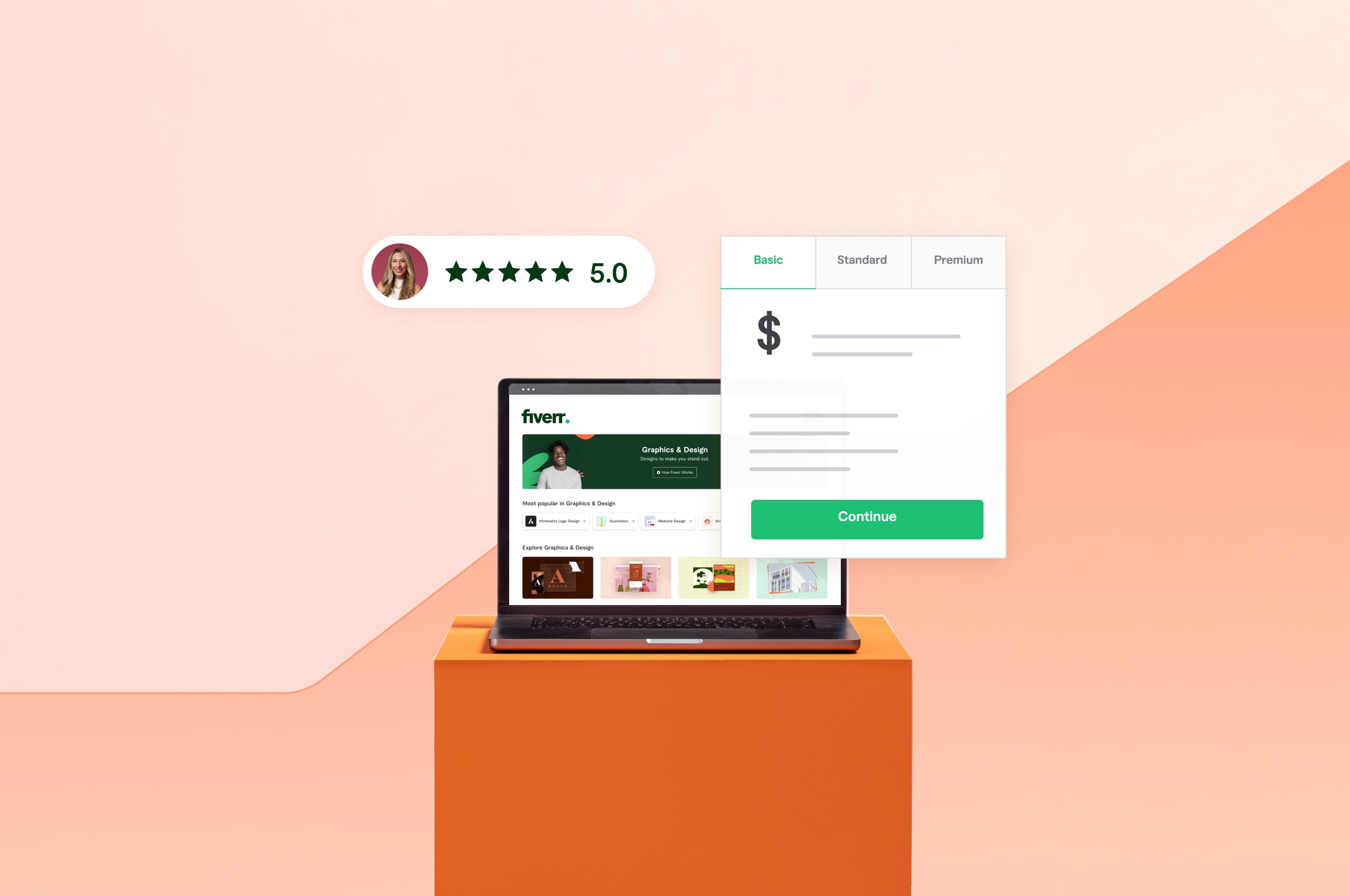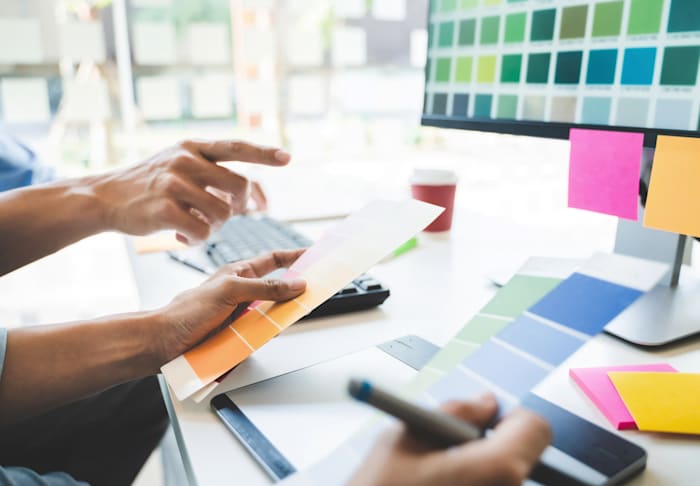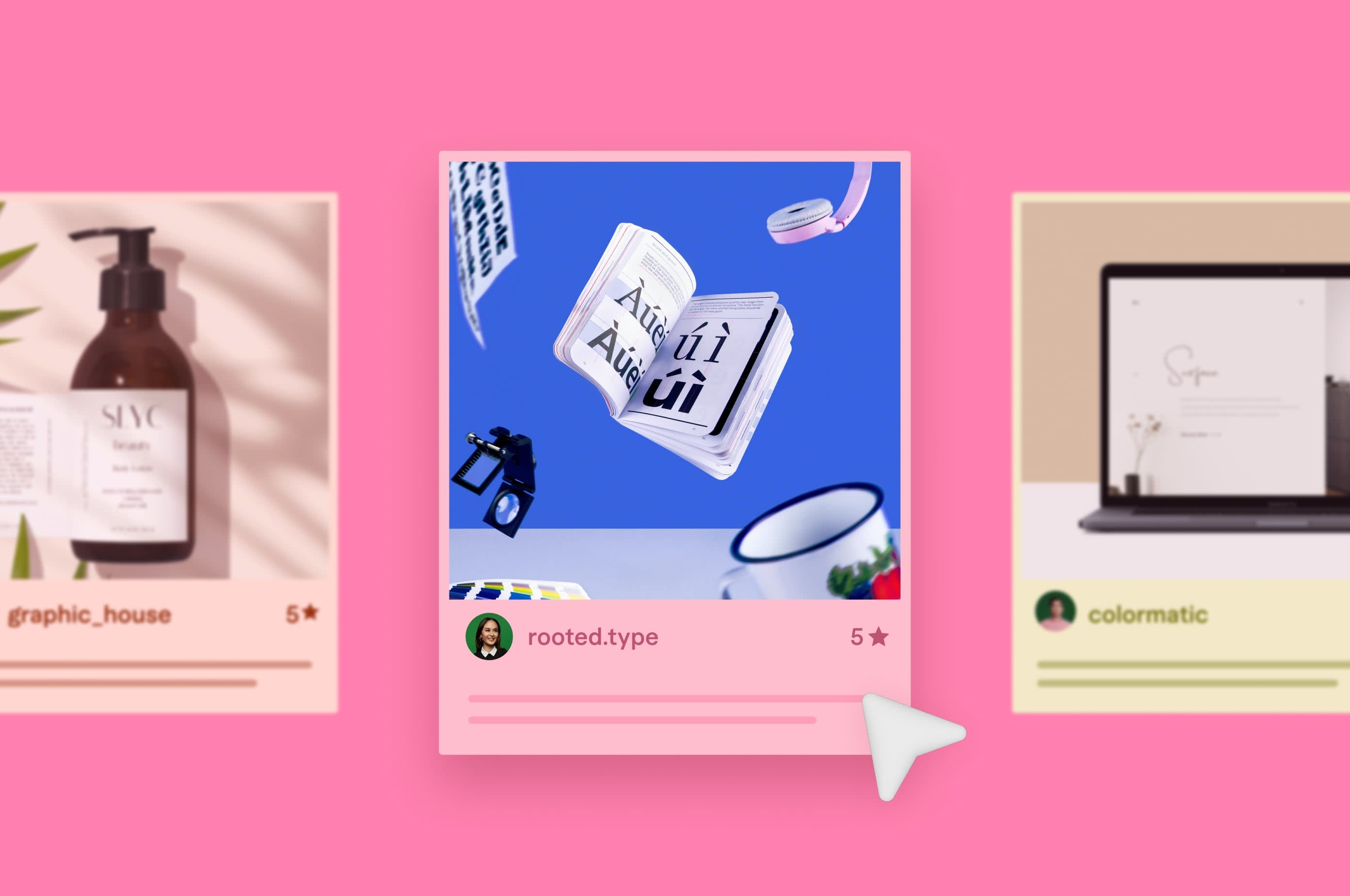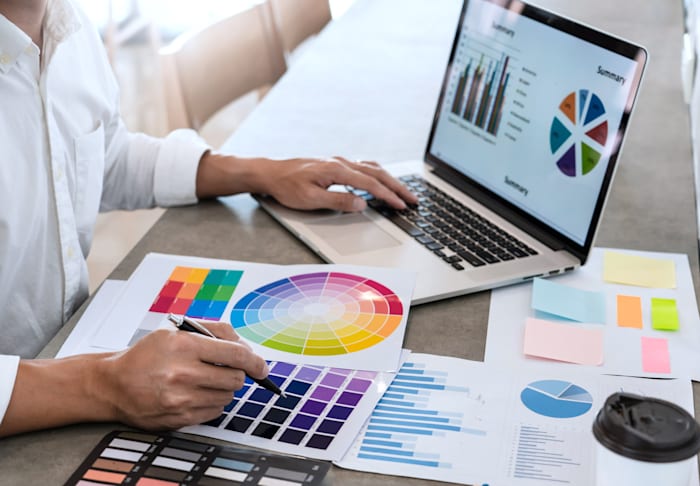How to Create a Design Invoice that Gets Paid Faster in 2024 (+ Templates)
Want to get paid faster for your work? Learn how to create a graphic design invoice in this guide.
 July 3, 2023
July 3, 2023 9 minute reading
9 minute reading
Running a successful graphic design business takes so much more than delivering eye-catching designs.
One big challenge many freelancers face is managing their finances effectively, especially when it comes to invoicing. Without a proper invoicing system, freelancers can experience delayed payments and dispute, which ultimately impacts their cash flow.
Not every designer creates a new invoice for every client in InDesign. In fact, as you’ll soon see, many tweak a graphic design invoice template to save time and stay organized.
Ahead, you’ll learn how to create a graphic design invoice, with tips and strategies for speeding up the payments process.
How to create a graphic design invoice
1. Choose a free graphic design invoice template
First off, create an invoice template.
There are a few options:
Create a basic template for your invoices using Adobe Illustrator or InDesign.
Use an invoice template from the internet.
Sign up for an accounting software for freelancers and use its invoice template.
Using the invoice template in accounting software is a good option. This will also keep all of your billing and accounting information in one place. The downside, however, is that you can’t customize the template as much as you’d probably like.
But for designers like Shelly Lim, that’s OK.
“When I first started out on my own, I designed every invoice in InDesign,” says Lim, a freelance presentation designer. “While this made the most sense for me as a designer to be able to have full control and build a perfectly designed invoice, it was time consuming, difficult to keep track of each invoice and also painful when tax time came around.
“Then, I started using free accounting software—I use Zoho—and everything changed! I have less control over the design of my invoices, but it saves me so much time and energy it’s worth it. Also, I can still pop the PDF into Illustrator to tidy it up before sending it off.”
You can find a graphic design invoice template online to meet your needs. They are also available in different formats, like Word, Excel, Google Docs, and PDF.

Invoice example from designer @androclesdaud38.
Regardless of the approach you take, the goal here is to solidify a template to use. That way, when it comes time to invoice, you can fill it in and send it to clients in minutes.
2. Add the basics
OK, now you’ve got your template. The next step is to fill it in.

Graphic design invoice example from eclosque.
At a minimum, your invoice should include:
Header: Includes your logo or business name and the word “Invoice.”
Your information: Your full name or business name, address, phone number, and email address.
Client’s information: Your client’s name or business name, their address, and their contact details.
Invoice number: A unique number for tracking purposes. If this is your first invoice, start with 001.
Date of the invoice: The date you’re issuing the invoice.
Payment due date: The date you’re requesting payment by.
Itemized list of services: A detailed list of services provided, each followed by a brief description.
Rates/price: The cost of each service provided. This can be an hourly rate or project fee.
Quantity: The number of hours/days worked or number of products delivered, depending on the nature of the service.
Total due: The total amount to be paid by the client. This is often broken down into subtotals (if tax, discounts, or additional fees are included).
Payment terms: Any additional terms like late fee policy, preferred payment methods (like transfer or credit card), bank account info, etc.
Thank you note: A small note thanking the client for their business.
💡REMINDER: Customize your invoice for each client by filling out their unique information. Be sure to accurately detail the services provided.
3. Customize your branding
Your invoice is an extension of your brand as a designer. It should represent who you are and your creative aesthetic.
Think of it as an opportunity to showcase your skills and professionalism, not just a means of billing your client.
Here’s an example of what a branded invoice looks like.

Professionally designed invoice by @mahfoz20.
Some elements to adjust are:
Logo: Make your logo known on the invoice. It should be the same one you use on your website, social media handles, and digital portfolios like Dribbble.
Color scheme: Tweak the invoice to match your brand colors.
Typography: Use the same fonts as in your other branded materials.
Images: Depending on your brand, you may want to add images or graphics.
Tone of voice: Clients even notice the language in your invoice. Whether it’s professional or casual, keep it consistent with your overall messaging.
4. Double check client details
The slightest mistake in your invoice can lead to delayed payments. No one wants that. Double check that your client’s company name and address are correct. Also, make sure you have the right contact person’s details, including their name, role, and email address.
Another thing to look out for is payment terms. If you agreed to a net-30 in your contract, but include a net-15 in your invoice, your client will be confused.
⚡PRO TIP: Use invoicing software like Fiverr Workspace to manage invoices. You can save a client’s details in the system. Then, automatically fill in the client’s information when creating your invoice.
5. Follow up
You’ve sent off your invoice and are ready to get paid. But your work isn’t over yet. Follow up with the client regularly to ensure you get paid on time.
Reminder before due date (Day 23, for a 30-day payment term): If you’ve set a net-30 term (which is most common), send a gentle reminder a week before the due date. Sometimes clients get busy and forget to process payments. This will give them a little nudge.
On the due date (Day 30): Send a friendly reminder telling the client payment is due.
Post due date (Day 30 and onward): If a client still hasn’t paid, follow up a few more times. Remain professional and remember that too many reminders can strain your relationship.
“I used to be scared to follow up on late invoices, thinking that I was being obnoxious, or I would wait a week or two past the due date before emailing,” Lim explains. “Now, I wait a couple days past the due date to check in. I almost always get an immediate response and it always helps to get paid quicker.”
An invoicing platform is key here. It will automatically send reminders to clients before and after the due date.
Tips for designing your invoice
Here are some tips for making an invoice that stands out:
Create an aesthetic, yet functional layout: Make sure the layout of your invoice is clear and easy to read. Your creativity shouldn’t compromise the function of the document.
Personalize your invoice: Think about how you can add a personal touch to each invoice, whether it’s a sketch, a thank you note, or a unique data representation. This can create a positive experience for your clients.
Use professional tools: Use design software such as Adobe Illustrator or InDesign to create your invoice. There are also online invoicing platforms with customization options that can save you time.
Revise and refine: Finally, always be open to revising and refining your invoice design. As your style or brand evolves, so too should the look of your invoices.
Strategies for speeding up the payment process
Getting paid for the design work you do is as important as the creative process itself. However, many designers have issues around payments, which disrupts the workflow and puts a strain on their financial stability.
Late payments, irregular cash flow, complex payment procedures, and unresponsive clients are some common problems that plague freelance life.
Scott Blume, web manager and designer at RGC Digital Marketing, has encountered this many times in his 15 years of designing. His four tips for improving the payment process are:
For faster payments, establish clear payment terms and expectations during the initial consultation.
For smaller projects with new clients, get payment upfront. Regular clients usually adhere to a payment timeframe ranging from a week to a month.
For larger projects, break down the total cost into installments and invoice accordingly as the project progresses.
Open communication throughout the process helps foster trust and timely payments.
Blume says, “Invoicing for graphic design projects requires clear communication and transparency. I’ve found that detailing the project scope and deliverables is crucial.
“By including the number of variations, design pages, revision rounds, or even the allocated hours spent on a project, clients gain a comprehensive understanding of the value they receive for the invoiced amount.”
Save time building your graphic design invoices
Managing your invoices is a move toward higher productivity and profitability. With the right graphic design invoice, you can streamline payment collection and save time that can be reinvested back into your creative work.
Want to find more clients to send those invoices to? Sign up for a free Fiverr account today.
Graphic design invoice FAQ
What is a graphic design invoice?
A graphic design invoice is a bill sent to your clients after you have provided them with your services. It provides a detailed record of the work you’ve done, and it includes a request for payment. The invoice serves as a legal record of the transaction for both you and your client.
Why is it important to have an invoice?
An invoice is important, as it serves as a formal request for payment, documents the design services provided, and helps both the buyer and seller track their finances.
What should a graphic design invoice include?
A graphic design invoice should include the designer’s contact information, client’s details, description of services rendered, time taken, rate, total amount due, payment terms, and due date.
What should a freelance invoice look like?
A freelance invoice should look professional and clear, containing elements such as the freelancer’s contact info, the client’s details, and a detailed breakdown of the work done, along with rates, the total amount due, payment terms, and the due date.



